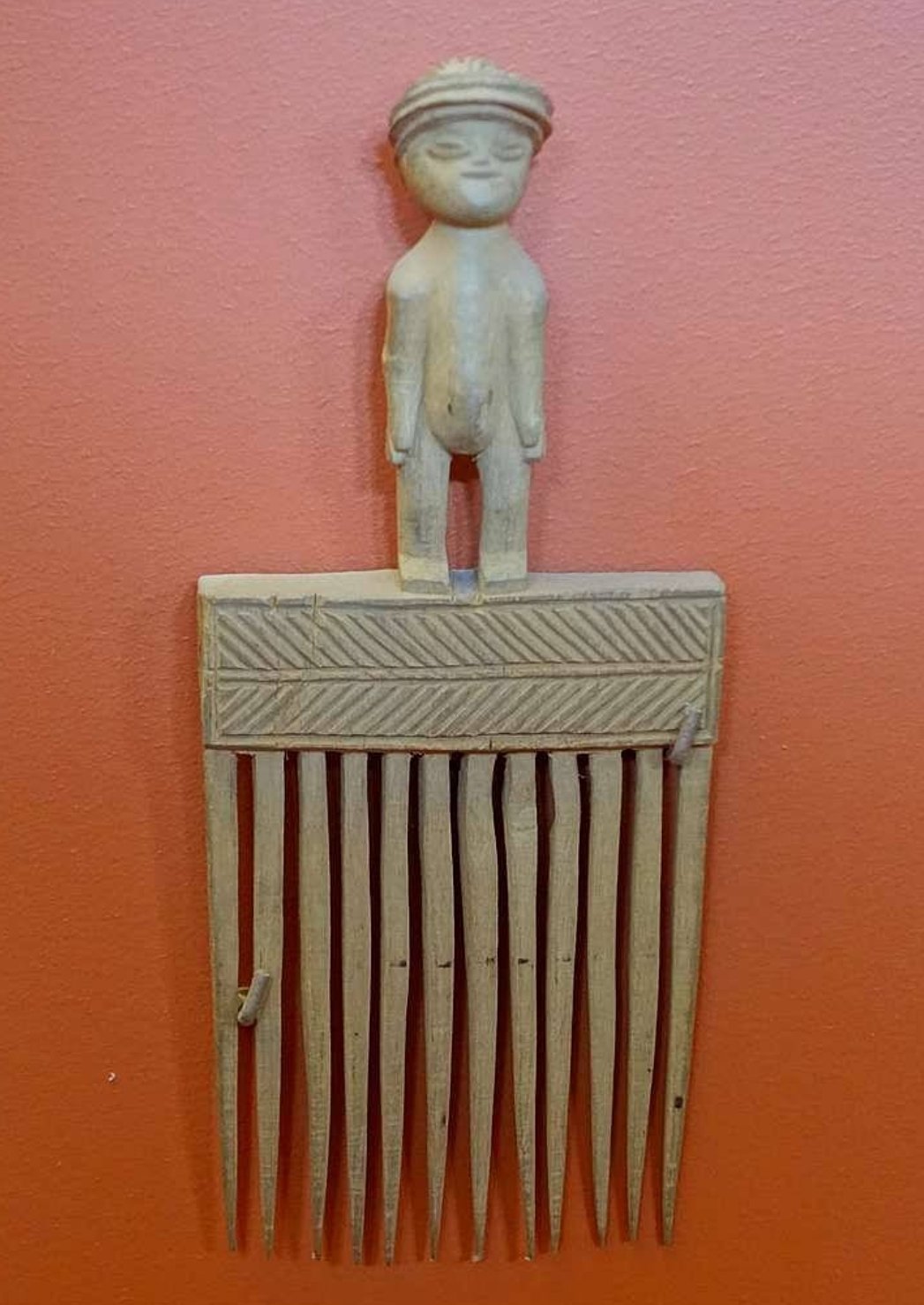
Comb with Two Female Heads. Yale University Art Gallery in 2012

Comb from the Asante people of Ghana. It features the inscriptions "Akua" and "Ahima", dated 1932.

Women’s hair ornaments, Angola, 1900. Made out of ivory and bone. Kept in Redpath Museum, McGill University.

Comb made out of wood. Angola. Made out of ivory and bone. Kept in Redpath Museum, McGill University.

Wooden hair comb from the Chokwe tradition.

Chokwe Cisakulo (Comb), Angola

Comb from the Akan people, made in ivory. 19th-20th century.

Tanzanian wooden comb. 20th century. Brücke Museum.

Ivory comb from the Lagoon or Akan people featuring a female ancestor sculpture.

Comb, Wood, Democratic Republic of the Congo, 20th century, The figure in this comb is a representation of the Chokwe founder, Chibinda Ilunga. He was a Luba hunter of royal descent, who married the queen of the neighboring Lunda, and together they established the Chokwe. Chibinda Ilunga is still regarded as a hero and role model, and his image appears frequently in their art, distinguished by his elaborate chief's headdress. He established the concept of 'sacred kingship' among the Chokwe, identifying rulers as representatives.

Wooden comb from Mali.


Wooden comb from Mali.

Carved wooden comb from the Chokwe people.

Carved wooden comb from the Chokwe people. Democratic Republic of Congo.

Carved wooden comb from the Luba people. Democratic Republic of Congo.

Carved ivory comb from Angola.


Cisakulo (comb) by the Chokwe people, Angola.

Wooden comb from South Africa.